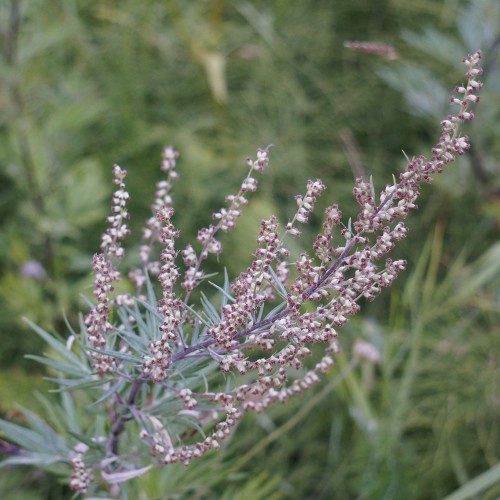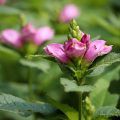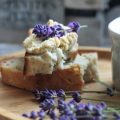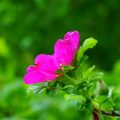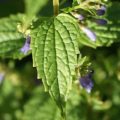- The Miraculous Shiny Bush Plant - January 18, 2021
- Colorful, Edible and Medicinal Celosia - January 10, 2021
- Radish, a Nutritional Power House - December 19, 2020
Mugwort, or artemisia vulgaris, is a hardy, vigorous, woody, perennial, flowering plant native to Europe. It belongs to the potent artemisia family named after Artemis, the Greek god of fertility, forests, and hunting. Famous herbs in this family include wormwood and sagebrush which have long herbal traditions alongside mugwort. Apart from the name mugwort, the plant goes by several names including old uncle Henry, and wild wormwood.
[Note: The Right Flowers is not a medical site. Knowledge of and information about the therapeutic benefits and applications of flowers, while known through the ages, does not constitute medical advice. If you are having health issues, you should consult with a physician.]
Artemisia vulgaris got the name mugwort from its wide use in flavoring beer before the advent of hops. In addition, it was used to ward off evil spirits and regulate fertility.
During the Middle Ages, the plant acquired a new name, cingulum sancti johnnis, as it was believed that John the Baptist wore a girdle of the plant during his time in the wilderness for protection. This explains why it is known as St. John’s plant.
Mugwort is quite tough and once the plant gets established, it becomes drought resistant and easily outgrows other plants. In addition, mugwort is known to inhibit the growth of other nearby plants via root secretions. As a result, the plant is categorized as invasive and aggressive.
Mugwort grows in well-aerated slightly alkaline or neutral, loamy soil. It prefers sunny areas and well-watered soils but can grow in partial shade with less water. Plants grown in dry, poor soils tend to have more aromatic scent compared to those growing in ideal conditions.
The has purplish stems resembling Bordeaux wine. The leaves are dark green on the upper part and feature downy hairs on the underside. It produces pale yellow or reddish flowers between July and October. When crushed, mugwort leaves and flowers have a pleasant sage-like scent.
All of its parts (flowers, leaves, stems, and roots) contain medicinal properties. The entire plant is anthelmintic, diaphoretic, stomachic, nervine, emmenagogue, oneirogen and diuretic. In addition, it is edible, which explains why its flowers were commonly used to flavor beer.
To get the best and highest concentration of essential oils from this plant, pick the flowers as soon as they bloom because this is when they have the highest concentration of volatile oils. If you intend to use the leaves, harvest them before the plant comes out in bloom and dry them.
As a tonic, mugwort has always been highly regarded for treating fertility problems including regulating menstrual flow. A concoction of dried leaves and flowers is heated and used as a counter-irritant in treating rheumatism. The plant also comes in handy for treating stomach problems, wounds, alleviating depression and eliminating internal and external parasites.
Mugwort is truly a miracle herb with multiple health benefits. You can choose to cultivate the plant for its ornamental value, its medicinal qualities or for culinary purposes.
